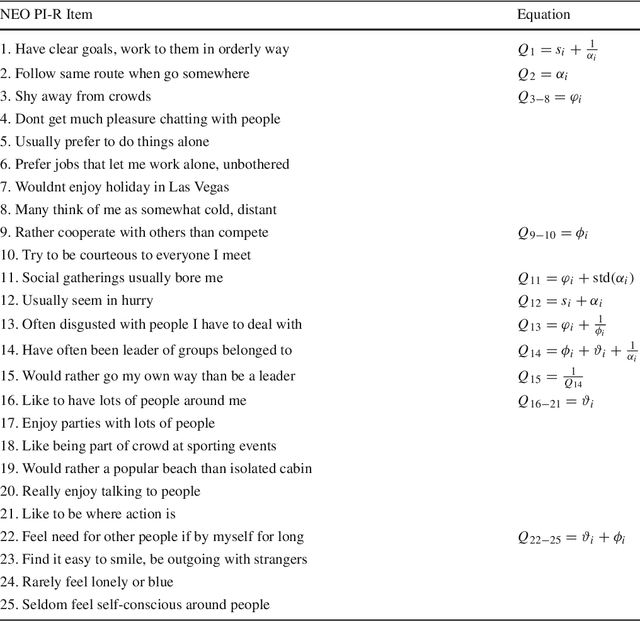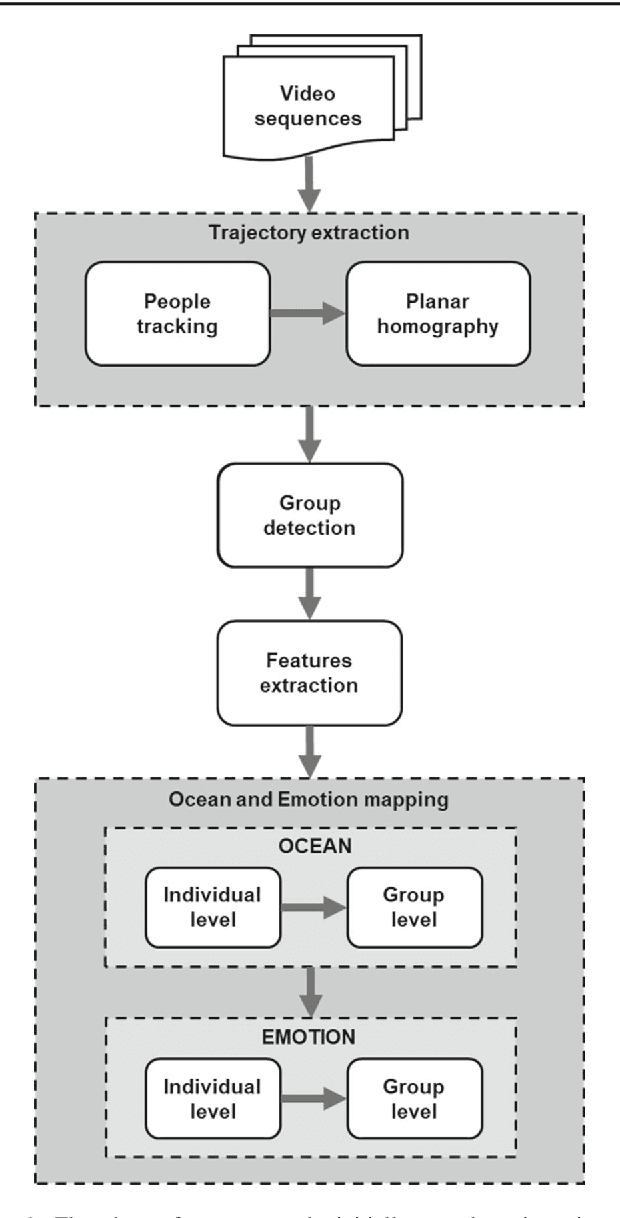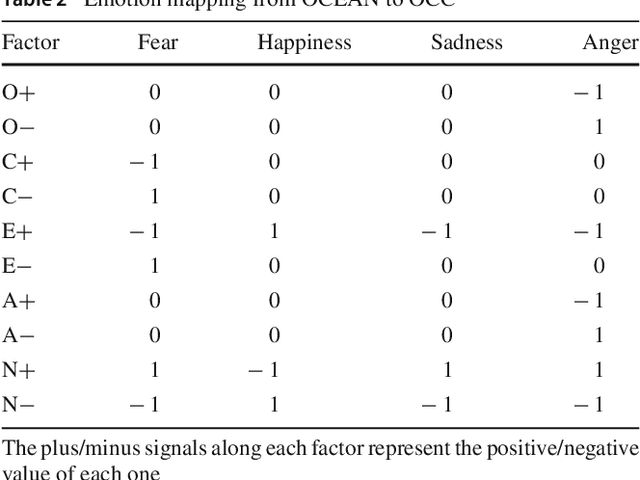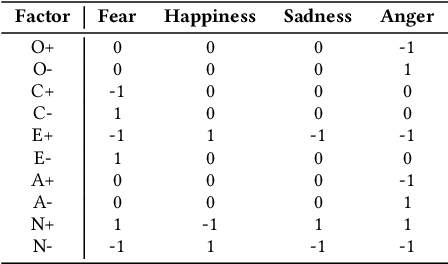Paulo Knob
Detecting Personality and Emotion Traits in Crowds from Video Sequences
Apr 27, 2021



Abstract:This paper presents a methodology to detect personality and basic emotion characteristics of crowds in video sequences. Firstly, individuals are detected and tracked, then groups are recognized and characterized. Such information is then mapped to OCEAN dimensions, used to find out personality and emotion in videos, based on OCC emotion models. Although it is a clear challenge to validate our results with real life experiments, we evaluate our method with the available literature information regarding OCEAN values of different Countries and also emergent Personal distance among people. Hence, such analysis refer to cultural differences of each country too. Our results indicate that this model generates coherent information when compared to data provided in available literature, as shown in qualitative and quantitative results.
Investigating Cultural Aspects in the Fundamental Diagram using Convolutional Neural Networks and Simulation
Sep 30, 2020Abstract:This paper presents a study regarding group behavior in a controlled experiment focused on differences in an important attribute that vary across cultures -- the personal spaces -- in two Countries: Brazil and Germany. In order to coherently compare Germany and Brazil evolutions with same population applying same task, we performed the pedestrian Fundamental Diagram experiment in Brazil, as performed in Germany. We use CNNs to detect and track people in video sequences. With this data, we use Voronoi Diagrams to find out the neighbor relation among people and then compute the walking distances to find out the personal spaces. Based on personal spaces analyses, we found out that people behavior is more similar, in terms of their behaviours, in high dense populations and vary more in low and medium densities. So, we focused our study on cultural differences between the two Countries in low and medium densities. Results indicate that personal space analyses can be a relevant feature in order to understand cultural aspects in video sequences. In addition to the cultural differences, we also investigate the personality model in crowds, using OCEAN. We also proposed a way to simulate the FD experiment from other countries using the OCEAN psychological traits model as input. The simulated countries were consistent with the literature.
How much do you perceive this? An analysis on perceptions of geometric features, personalities and emotions in virtual humans
Apr 24, 2019



Abstract:This work aims to evaluate people's perception regarding geometric features, personalities and emotions characteristics in virtual humans. For this, we use as a basis, a dataset containing the tracking files of pedestrians captured from spontaneous videos and visualized them as identical virtual humans. The goal is to focus on their behavior and not being distracted by other features. In addition to tracking files containing their positions, the dataset also contains pedestrian emotions and personalities detected using Computer Vision and Pattern Recognition techniques. We proceed with our analysis in order to answer the question if subjects can perceive geometric features as distances/speeds as well as emotions and personalities in video sequences when pedestrians are represented by virtual humans. Regarding the participants, an amount of 73 people volunteered for the experiment. The analysis was divided in two parts: i) evaluation on perception of geometric characteristics, such as density, angular variation, distances and speeds, and ii) evaluation on personality and emotion perceptions. Results indicate that, even without explaining to the participants the concepts of each personality or emotion and how they were calculated (considering geometric characteristics), in most of the cases, participants perceived the personality and emotion expressed by the virtual agents, in accordance with the available ground truth.
 Add to Chrome
Add to Chrome Add to Firefox
Add to Firefox Add to Edge
Add to Edge